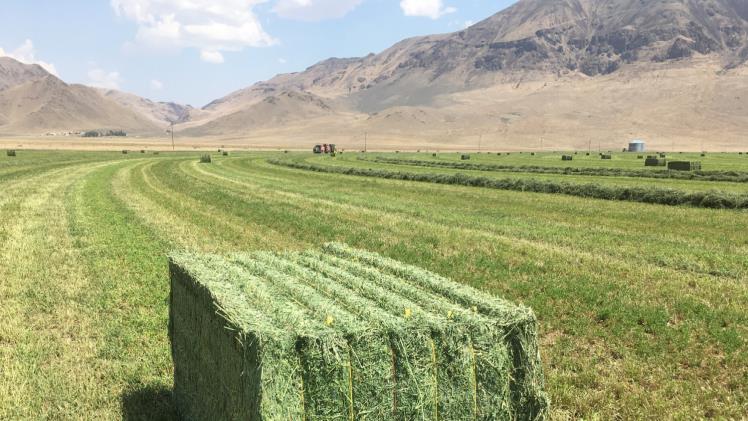Bales of straw can be bundled or put away for later use. There needs to be enough moisture first. Hay in the silo may become loose or catch fire if it is very damp. When used as animal feed, hay that is too dry loses its nutritional value. Thus it’s critical to precisely predict the moisture level of hay bales before storing them.
For testing, farmers can use several techniques of hay bale moisture tester. Each moisture testing technique has benefits and drawbacks. We’ll discuss it here.
By Hand
Among the earliest techniques used by farmers to evaluate the moisture and quality of their crops. Compared to previous procedures, this approach is employed for longer, mainly because you need your two hands and no additional tools.
With this technique, the farmer merely twists or squeezes a bundle of straw in his palm. Hay will be distributed by the farmer to observe how it responds. The farmer estimates how much water the cook is spewing. There is also a new variety of straws.
Oven drying test
Oven drying tests come in a variety of forms. Each kind makes a different assumption about the oven or heat source, such as convection oven drying testing. There are numerous different types of microwave ovens and even field test tools.
The procedure for calculating the moisture content of the hay is generally the same regardless of the kind of furnace used in the experiment:
- Determine the straw sample’s weight before drying.
- Air out the hay (This may take 20-40 minutes depending on the drying method and the total moisture content of the hay.) Till the hay sample is completely dry, the drying procedure might occasionally need to be repeated. Weight is constant.
- Determine by weighing the hay. hay bale moisture tester
- Subtract dry mass from the wet mass. Add a % conversion to determine the moisture percentage, and subtract this figure from 100.
Illustrative dry/wet equation 150 200 = 0.75 or 75% DM, which indicates that the percentage of straw MC is 25% if you have 200g of straw before drying and 150g after drying.
It is said to be the most precise method for calculating the ideal moisture content.
Moisture Probes for Hay
When manual humidity readings are quite incorrect, this is helpful. Additionally, it takes a while to get used to the oven-dry test. What is the best method for rapidly and accurately gauging the moisture content of hay bales? Exists a test procedure that reasonably balances accuracy and time constraints?
There are methods for both techniques to quicken the process. It is accurate enough to assess the moisture content of hay and offers exact measurement (faster than hand testing).
These strong and dependable gadgets come in several styles because the hay may be rolled while the press measures moisture for portable equipment that farmers can use before examining the moisture content of hay bales.
Simply place the probe into the hay bale. The machine will then inspect the hay on your behalf. Specific moisture analyzers can take numerous measurements per second. Delmenhorst’s F-2000 Series collects 100 cumulative average measurements to ensure that moisture values are not inadvertently lost and to help in speedy averaging findings.
As soon as hay bales can be examined by a moisture meter. Little time to review early findings. This moisture analyzer is the ideal tool for measuring moisture when preparing hay for baling because it has no clock. This is because it often takes the hay several hours to attain the ideal binder moisture level.
Conclusion
Overall, using a hay bale moisture tester to assess the moisture level of hay bales is a rapid and efficient method. It combines the benefits of accurate measurement with speed. When the moment is right, farmers can measure them with confidence.

